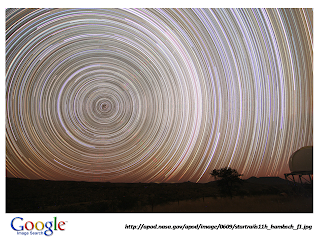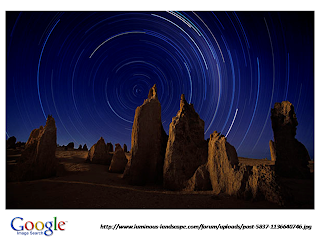

What do you first think when you look into these photos? Are they computer generated effects, or probably some graphic designed background? These are called Star Trail.
Star Trail is generated by some simple photography techniques. 3 most important aspect to be emphasized, which are ISO, Shutter Speed and Aperture. I haven't tried to take this photo before, but I could provide some basic general information on how Star Trail can be taken. However, this really require a more advanced camera.
First thing first, normal compacts would not be able to take this photo due to its limited control on these 3 main components. Therefore, a DSLR would be needed. Then, of course, for its perfection, additional accessories like a remote control, etc would be good for the enhancement of the photo.
"When photographing stars, you can either get a star "field," a static snapshot of the stars as points of light, or star "trails," where the stars' movements streak across the sky. How long you expose the image determines which you get. The first rule of thumb to remember is that the Earth rotates such that the light from a star begins to "move" after about 30-40 seconds. (It's apparent movement is largely dependent on your lens—the longer the focal length, the more apparent the movement; the wider angle lenses won't show much movement till later because of the star point is so small.) Part of your experimentation will be to gauge the timing for how much "trail" you want.
Photographing star trails is technically simple; the main things to keep in mind are:
- Timing the light
- Compositing the scene
- Watching battery power
- Experimenting a lot


















No comments:
Post a Comment